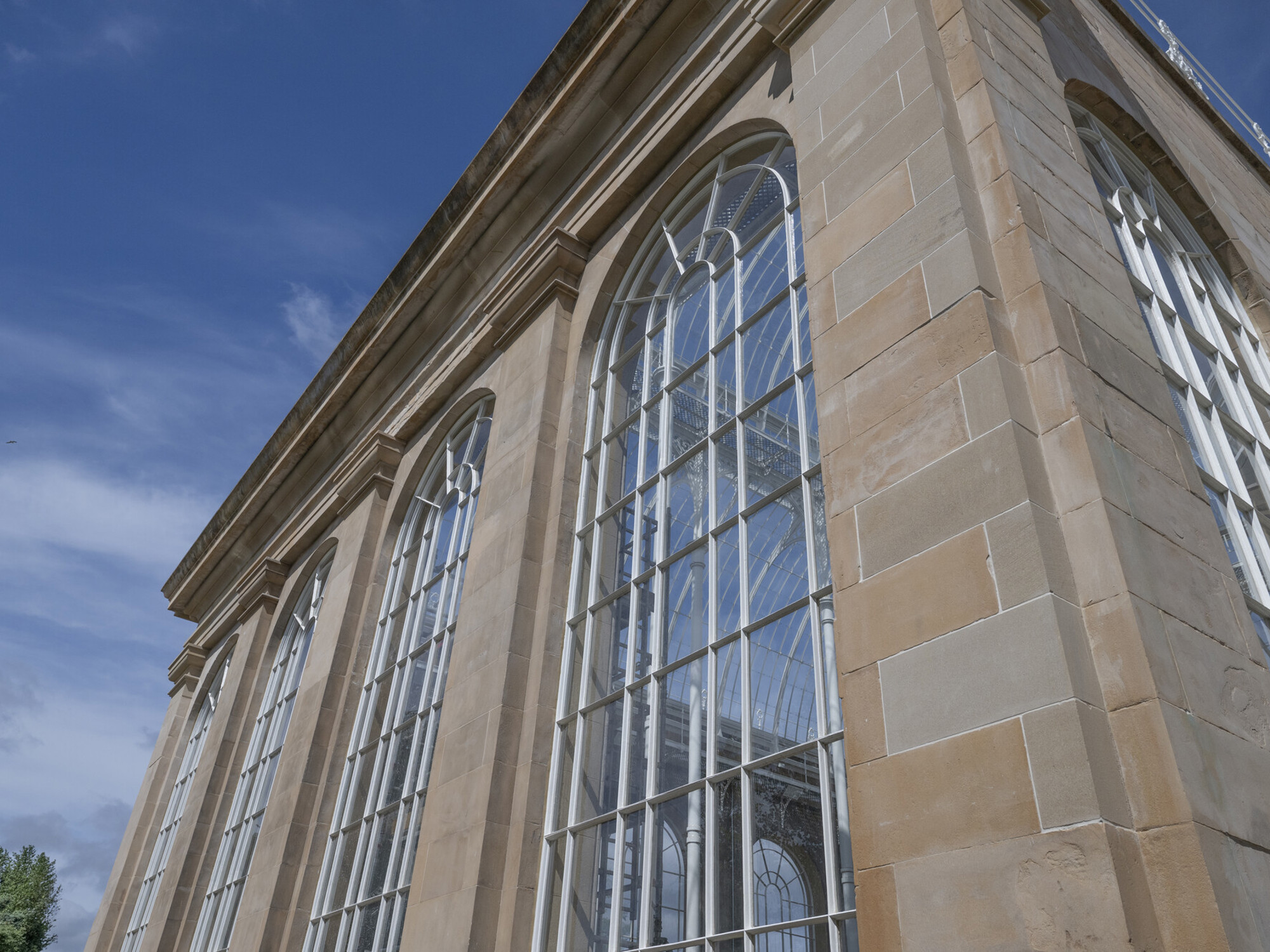Thanks to the transformative power of philanthropy, the historic Palm Houses at the heart of the Royal Botanic Garden Edinburgh are entering a new era.
Generous gifts from six major charitable organisations, alongside the contributions of thousands of individual donors, have brought this ambitious restoration project to the brink of completion. Since 2021, more than £10.6 million has been raised, including over £9 million from the National Lottery Heritage Fund, The Julia Rausing Trust, Villum Foundation, part of the VELUX foundations, Wolfson Foundation, Garfield Weston Foundation and Historic Environment Scotland. Their collective support has made possible the renovation of these much-loved A-listed glasshouses, while also laying the foundations for a dynamic new centre for education, conservation, and visitor engagement.
Now, with construction in the final phases, the Garden’s team will soon turn to the final phase: landscaping the soaring, cathedral-like interior, replanting more than 600 botanical specimens, and shaping a revitalised visitor journey—before the Palm Houses reopen in 2026 as a renewed symbol of environmental stewardship and inspiration.
Simon Milne, Regius Keeper said: “At a time when around 45 per cent of the world’s plant species are threatened, the transformation of our Palm Houses — made possible through the extraordinary power of philanthropy—is both timely and essential. These beautifully restored buildings will not only conserve precious botanical collections but also provide an inspiring platform to engage people of all ages with the natural world.
“This project is a celebration of vision, generosity, and shared responsibility. We are deeply grateful to our major funders and the many individuals and organisations who have helped us reach this pivotal moment. Together, we are creating a legacy of learning, conservation, and action—one that will echo far beyond the glass walls of the Palm Houses.”
Caroline Clark, Director for Scotland, National Lottery Heritage Fund said: “Thanks to National Lottery players, we are proud to support the restoration of these precious Victorian glasshouses and their important plant collections. It is a privilege to help secure the future of these beautiful buildings, part of Scotland’s scientific and botanical heritage.
“Interpretation and visitor activities alongside the restoration work mean new and compelling stories about this heritage are being revealed for visitors from Scotland and across the world.”
Simon Fourmy, Chief Executive of The Julia Rausing Trust added: “Supporting heritage for the benefit of all has long been an important part of our work, and so helping to conserve this magnificent heritage site – a classic example of Victorian technology and invention – is therefore a fitting project. It will ensure that Edinburgh's botanic history is protected for the benefit of all society. We look forward to the creation of an exciting new visitor experience, designed to inspire a sense of joy and awe in the natural environment.”
Lars Bo Nielsen, Executive Director of Villum Foundation, part of the VELUX foundations, said: “The architectural splendour of Edinburgh’s Palm Houses is an important part of Europe’s shared heritage and identity. Part of VELUX foundations, the Villum Foundation has fittingly supported the installation of new glass in the Palm Houses, along with the restoration of the historic sandstone and ironwork. Our support will ensure daylight and fresh air to the precious plants they house for generations to come and provide enlightenment about these plants for those generations.”
Paul Ramsbottom, Chief Executive of the Wolfson Foundation reflected: “Our support for the restoration of the Palm Houses ensures the safety of the globally significant Living Collection of plants housed within the historic buildings and helps uphold the Garden’s status as a global centre for plant sciences, horticulture and conservation. It also provides a valuable resource for researchers in the fight against biodiversity loss and the climate crisis.
Clare Gough, Director, the Garfield Weston Foundation added: “The Garfield Weston Foundation believes in supporting a diverse range of charities across the UK. From local community initiatives to large capital projects like this one, the common thread is that all our grantees make a real positive difference. We are delighted to have supported the important restoration of a special example of Victorian and Georgian architecture that was in such need of remedial work, and created a home for plants that will be safe, and energy-efficient for generations to come.”
Alison Turnbull, Director of External Relations and Partnerships, Historic Environment Scotland (HES) added: “Working with the Garden, we have provided technical advice as well as funding to help conserve these magnificent examples of nineteenth century botanical buildings. From the carving of elaborate new stone cornices to the specialist restoration of iron structure and fittings, the quality of the craftsmanship has been extraordinary, helping to return these significant historic buildings to their former glory.”
Set within the historic heart of the Garden, the much-loved Palm Houses illustrate late Georgian and Victorian engineering, are part of Scotland’s built heritage and of unique architectural significance to the nation. The magnificent buildings normally serve to protect and showcase the Garden’s precious Living Collection of plants, some of which are endangered in their native habitats. However, at almost 200 years old, the structures were badly eroded and in desperate need of repair.
Specialist renovation work to the iron structure and fittings, stone and glass began in 2022, and now, with the conservation of the buildings complete, the focus has moved to replanting and the creation of a dynamic new visitor experience.
In addition to funding from organisations and individuals from across Scotland, the UK and globally, the restoration of the Palm Houses has been underpinned by funding from the Scottish Government with a proportion of their £58 million investment in the Garden’s Edinburgh Biomes development programme being directed towards the restoration project.

